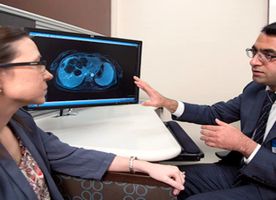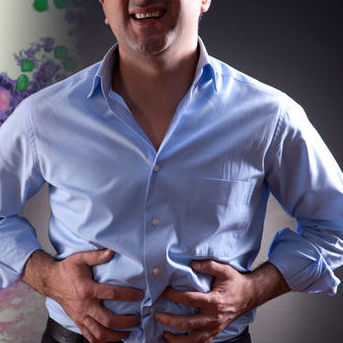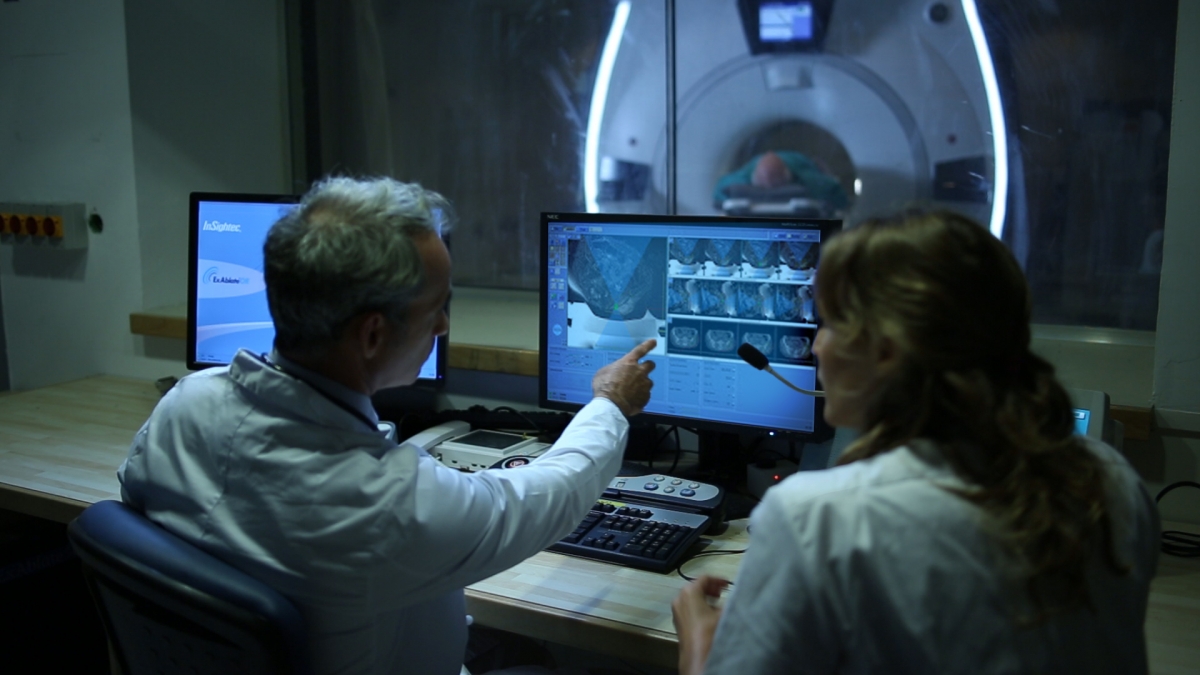Brachytherapy in Heidelberg
Search and Compare the Best Clinics and Doctors at the Lowest Prices for Brachytherapy in Heidelberg






Brachytherapy at Heidelberg University Hospital in Heidelberg, Germany
Our partner clinics in are accredited by the following associations












































































































































No Time?
Tell us what you're looking for and we'll reach out to the top clinics all at once
WHY US?












































































































































No Time?
Tell us what you're looking for and we'll reach out to the top clinics all at once
What does a Brachytherapy Procedure Involve?
Brachytherapy is a process wherein a radioactive substance, typically sealed within a tiny pellet or wire, is implanted directly into or in the close vicinity of the tumour. This sophisticated procedure is conducted in a hospital under the guidance of medical experts while the patient remains under anaesthesia. The treatment, however, exhibits two forms: the High-dose-rate (HDR) brachytherapy and the Low-dose-rate (LDR) brachytherapy.
HDR brachytherapy is an outpatient procedure, delivering high radiation doses within minimal time, whereas the LDR form entails the permanent placement of a radioactive source into the tumour, needing a short hospital stay post-procedure. These methods might vary slightly depending on the cancer type and location, but the ultimate objective remains unaltered - delivering high radiation doses to destroy the cancerous cells.
How Long Should I Stay in Heidelberg for a Brachytherapy Procedure?
The stay in Heidelberg for a brachytherapy procedure is determined by the therapy type involved. HDR brachytherapy, for instance, may need multiple outpatient sessions spanning a couple of weeks. In contrast, the LDR method generally requires a brief hospitalization followed by adequate rest and recovery at home.
However, the entire treatment timeline involves more than just the therapy sessions. The time for the preliminary consultation, pre-operation care, follow-up visits, or additional therapies also needs to be factored in. Taking all these factors into account, we recommend a period of 2-4 weeks in Heidelberg for undergoing a brachytherapy procedure and its related activities.
What's the Recovery Time for Brachytherapy Procedures in Heidelberg?
The duration of recovery after undergoing a Brachytherapy procedure in any location principally relies on the specifics of the treatment, encompassing the form of cancer being managed and the patient's overall health condition. High Dose Rate (HDR) Brachytherapy, which is typically undertaken as an outpatient procedure, often results in a swifter recovery period. Patients are commonly able to revert to their normal activities within a couple of days following the procedure.
Conversely, Low Dose Rate (LDR) Brachytherapy, which involves the permanent implantation of a radioisotope, may enforce certain temporary restrictions on physical activities following the procedure. The body may need from several weeks to a few months to fully adjust to the implant and for any potential side effects to diminish. It is of utmost importance to establish open communication with your healthcare provider, discussing your recovery progress and any symptoms that may emerge.
What's the Success Rate of Brachytherapy Procedures in Heidelberg?
Brachytherapy, an effective cancer treatment, is gaining prominence in Heidelberg. The procedure, backed by cutting-edge technology and highly qualified medical professionals, is primarily designed to keep patient welfare and therapy success in mind. Nonetheless, it's crucial to be aware that brachytherapy, much like other medical treatments, does carry certain potential side effects and risks.
For instance, some patients, specifically 15-30% undergoing brachytherapy for prostate cancer, might encounter issues related to erectile dysfunction. Further potential side effects could comprise problems with urinary and digestive systems, bleeding or the presence of blood in urine or stool.
However, it's worth noting that when it comes to its effectiveness, brachytherapy in Heidelberg has a compelling track record, particularly in treating cancer types including prostate and cervical cancers. The success of this treatment may hinge on several elements including the kind of cancer, its stage, the patient's general health, and how well the patient responds to the therapy. It's always emphasised to remember that each case is distinct; therefore, it's always advisable to engage in comprehensive communication with your healthcare provider. This not only assists you in grasping a clear understanding of what the treatment entails but also equips you to handle any potential difficulties pertinent to your case in a better way.
Are there Alternatives to Brachytherapy Procedures in Heidelberg?
While brachytherapy is one approach in the management of cancer, it may not be the optimal therapy for everyone. In Heidelberg, a host of other modalities are accessible, depending upon distinctive aspects of the malignancy such as its particular type, progression stage, and site, as well as the patient's overall health status. These include external beam radiation therapy, chemotherapy, immunotherapy, targeted therapy, and surgical operations.
Let's discuss these alternatives in a bit more detail:
- External Beam Radiation Therapy: This process employs a device situated outside of the body that imparts radiation in energy-dense beams, focusing on the cancerous cells.
- Chemotherapy: This technique uses pharmaceutical agents to destroy or impair the cancerous cells, hampering their proliferation and dissemination throughout the body.
- Immunotherapy: As the name suggests, this treatment augments the patient's own immune response to detect and eradicate malignant cells.
- Targeted Therapy: This method particularly concentrates on the interior alterations in cancer cells that empower their survival and growth.
- Surgery: In selected circumstances, the clinical decision may be to physically excise the tumour.
It's crucial to acknowledge that brachytherapy can be used in combination with the above-mentioned alternatives to enhance the overall benefits of the treatment plan. For a comprehensive understanding and to select a suitable therapy, do interact extensively with your health professional about all these available choices. Your decision should be well-informed and befit your unique health condition.
What sort of Aftercare is Required for Brachytherapy Procedures in Heidelberg?
Aftercare plays a pivotal role in the healing process post-brachytherapy treatment in Thailand, helping ensure optimal health recovery and improving the quality of life for individuals. Navigating the aftermath of such treatments might be challenging, but guidance from healthcare providers and caregivers can aid significantly. Here is what you should expect:
- Regular Health Assessments: To ensure your health returns to its optimum after your operation, scheduled health visits are a necessity. It allows your healthcare provider to track your healing, handle any potential side effects, and flag any issues early on. They will establish a routine personalised based on your circumstances.
- Treatment of Post-Procedure Symptoms: Some individuals may feel unease, such as being overly tired, discomfort, or issues related to urinary or reproductive functions after the operation. Your healthcare team will guide you on practices to help ease these symptoms, which will make your transition back to everyday life smoother.
- Resumption of Regular Physical activities: Gradually going back to your normal physical activities after the procedure is recommended. It is, of course, essential to consult with your healthcare team to determine the appropriate timing and guidelines for initiating these activities.
- Healthy Living Choices: A diet filled with the right nutrients and staying hydrated not only promotes speedy recovery but also overall wellness. Regular physical exercise supports this as well. Cutting out smoking and reducing alcohol intake assists in promoting better health outcomes.
- Emotional Care: Emotional health is as crucial as physical health post-procedure. By leaning on support groups, making use of counselling services, and confiding in loved ones, you could better handle any emotional stresses in the aftermath of your treatment.
Ultimately, gaining a deep understanding of your health condition, the potential side effects and measures to be taken after your procedure is a step toward quick recovery. It's encouraged to communicate openly with your healthcare team about any concerns or difficulties during this period. Following these guidelines ensures that your health journey is an inclusive process, in sync with your comfort levels and individual needs.
This information has been accurately sourced and verified by a medical professional for its accuracy, however, we strongly recommend you to consult with your doctor before pursuing medical procedures overseas.







